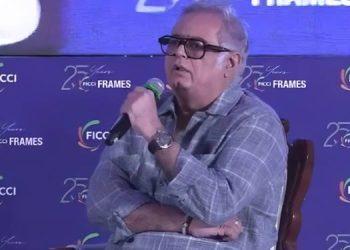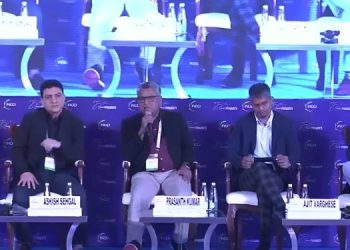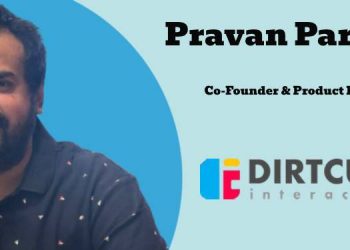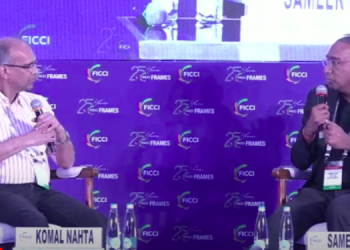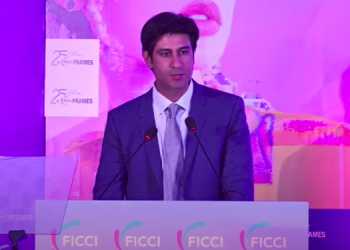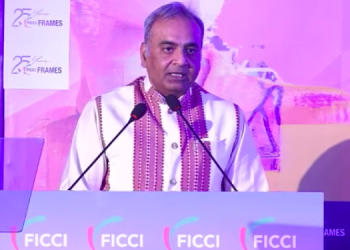Infectious Advertising is an 11-year-old media-agnostic ‘ideas company’ founded by Ramanuj Shastry and Nisha Singhania that believes in creating work that solves problems facing brands and businesses. Some of their clients include American Express, National Geographic, Under Armour, IHCL, CIBIL, UltraTech Cement, Inorbit Malls, and TBZ – The Original, among others. The agency recently launched its content arm-Epidemik Content, delivering content with best-in-class production.
Infectious Advertising recently roped in Abrar Nakhuda as Head of Digital.. He has in the past worked with digital agencies such as Digit 9.0, Every Media Technologies, Culture Machine and Viral Fission.
He has handled legacy brands like NBA, Star India, Pepsi, and Amazon – delivering data-driven content IPs that fostered authentic community growth. He believes in agile marketing and innovative audience engagement.
Medianews4u.com caught up with Siddhartha Singh Managing Partner & COO Infectious Advertising
Q. Infectious Advertising was created in 2013 to solve clients problems. So far what progress has been made?
What started as a Communication Agency is a Digital forward organisation that understands brands best. And as to where we want to go today, “In 2025, Infectious Advertising will position itself as the most ‘interesting’ independent agency in town – that’s the plan.
We intend to leverage Insightful creativity with the power of data and tech to create impact. This year, we aim to delight our partner clients and build deep, authentic connections with customers. As storytellers, we will harness the power of AI to tell stories in whole new ways.
No matter how hyper-personalised we get, we will never lose sight of the fact that we are in the business of magic. We will remain ethical and inclusive because it’s important to be nice.
In 2025, we plan to stay agile and keep learning. As culture constantly shifts, the brands in our care have to stay current and relevant. Our goal is simple: do great work, stay connected to the people and embrace the new.
Q. Is clutter and having to do more work with the same or less marketing budget the biggest problems that clients face? What are some effective ways of dealing with this?
While the challenges are significant, with the right strategies in place, Clients can still achieve strong outcomes despite working within budget limitations.
The key is smart targeting, creative differentiation, and continuous optimisation of platforms. We have done this on projects with Anmol Industries and benefitted.

Q. How does blending digital strategies with traditional branding approaches give the agency a competitive advantage?
At the core of it – we are story-tellers, the medium is really a means to that end. Having said that, the ability to think and execute through the line is an advantage that we have, the perfect mix of brand and digital!
Q. Margins getting squeezed are a challenge in the industry. Does the solution lie in indexing work to a clients business outcome?
Early days but indexing work to a Client’s business outcome creates a more dynamic, results-driven relationship that is beneficial for both the Agency and the Client.
It ensures that the agency’s work is not only relevant but also impactful, leading to better results even in a challenging, margin-squeezed environment. The focus shifts from the cost of services to the value being delivered, creating a more sustainable and profitable partnership.
By embracing this mindset, agencies can position themselves as indispensable partners that help clients navigate challenges and achieve long-term success, rather than just as vendors delivering a set of services.
Q. Could you talk about recent work done with companies like American Express, National Geographic, Under Armour, IHCL, CIBIL that stands out?
The UA work with Neeraj Chopra would probably the one the most sought after campaigns done by the Agency. The results were absolutely phenomenal. Work on AmEx with Manish Malhotra during Diwali was exceptional and effective.
Q. How has leveraging AI technologies boosted the agency’s efficiency and creativity?
What it really does is allows us to experiment a lot and do that faster. Areas like story-boarding for films etc are now closer to the outcome and therefore make for better decision making even from a Client POV.
Q. Is AI reducing the problem of adequate human talent?
Nah – you still need thinkers!
Q. How does the agency’s data-driven approach help enhance strategies and campaigns?
A data-driven approach provides a huge competitive advantage because it empowers the agency to make decisions based on real-world information rather than assumptions. This leads to smarter, more efficient campaigns, increased personalisation, real-time optimisation, and measurable results.
Data also helps in anticipating trends, forecasting customer behaviour, and refining creative and messaging, ensuring that campaigns continuously evolve and meet the target audience’s needs effectively.
By integrating data into every step of the strategy and campaign process, agencies can create more relevant, engaging, and results-oriented campaigns that drive long-term success for their clients.

Q. Recent reports indicate that the TV ADEX is struggling as monies shift to digital. Is the agency also seeing clients often prefer digital to TV?
In this evolving landscape, our role as an Agency is to help clients navigate this shift, understanding when and where TV is the right choice for brand visibility, and when digital platforms will yield better results in terms of engagement, cost-efficiency, and measurable outcomes.
So yes, while we still work with TV for Clients who benefit from its reach and impact, digital has undoubtedly become a larger and more significant part of our overall strategy. It’s about blending both effectively to maximize impact and ROI for our clients.
Q. Does creating work for Gen Z necessitate a different approach compared to targetting other age groups?
Digital-first, social media-driven campaigns, influencer collaborations, and short-form content are essential. By contrast, older age groups may respond better to traditional advertising and longer, more polished campaigns.
Agencies need to stay attuned to these generational differences and craft tailored strategies that speak directly to each demographic’s preferences, behaviours, and values. In the case of Gen Z, it’s about being part of their world, engaging them on their terms, and speaking their language.

Q. So far what progress has Epidemik Content made in creating bespoke solutions for the ever- evolving content needs of brands in the digital age?
As Epidemik Content nears its first anniversary, it’s the perfect time to reflect on our journey so far. The past year has been a whirlwind—navigating budgets, meeting impossible deadlines, pushing creative boundaries, streamlining efficiencies, scouting talent, and ultimately, solving problems to add real value for our clients.
The strongest testament to our success is the trust we’ve built—evident in the repeat work we continue to do for our clients. Today, we’re not just crafting content; we’re producing films, much like a production house, because brands recognise the advantage of working with us and leveraging the creative expertise of Infectious Advertising in partnership.
More and more, clients are demanding multi-format executions—at least ten variations tailored for different platforms. Yet, they still seek craft, scale, and impact. The challenge is to deliver on all fronts, and that’s where our in-house talent and experience give us an edge.
What excites us most is the expanding role of technology in our storytelling. With generative AI, virtual reality, Unreal Engine, and virtual studios at our fingertips, we’re pushing boundaries and opening new conversations with clients—taking their content beyond the expected into immersive experiences.
Through it all, we evolve, we learn, and we grow—continuously shaping bespoke content solutions for the ever-changing digital landscape.


